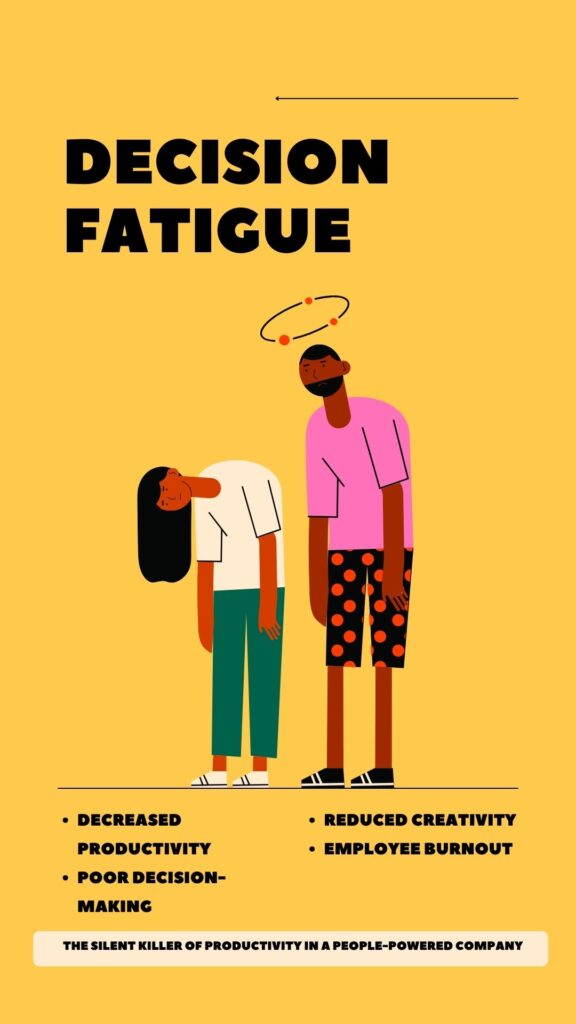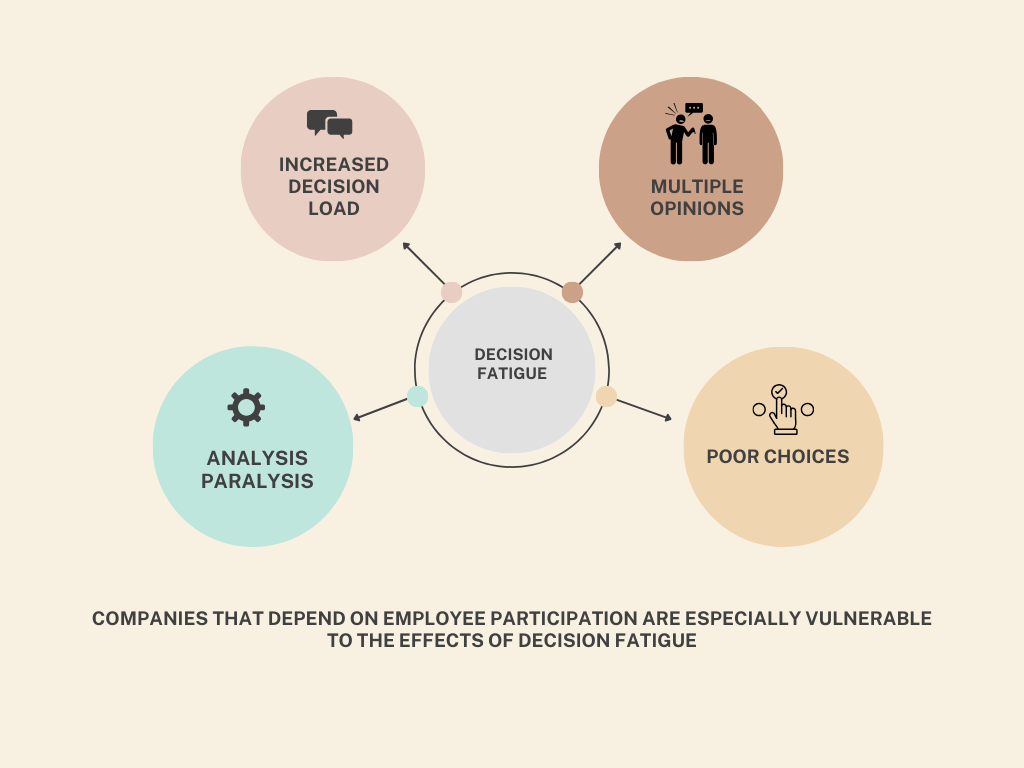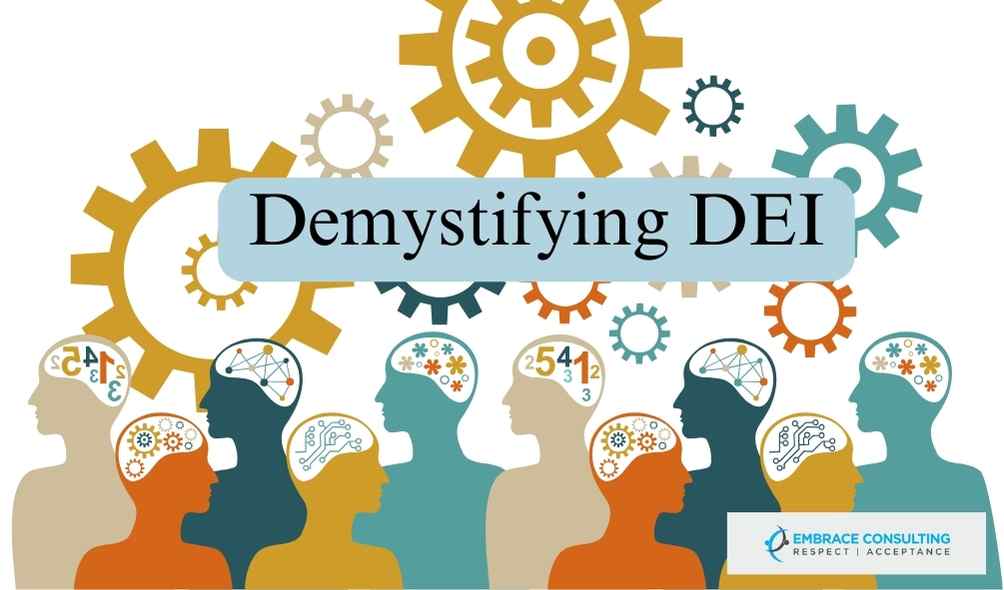The Silent Killer of Productivity in a People-Powered Company
In today’s dynamic work environment, we’re bombarded with choices. From prioritizing tasks to choosing communication channels, every decision, big or small, chips away at our mental reserves.
This constant decision-making can lead to a state known as decision fatigue, a phenomenon where our ability to make sound judgments deteriorates as the day progresses.

- Decreased Productivity: Studies by the American Psychological Association (APA) show that decision fatigue can significantly impact productivity. When faced with too many choices, employees struggle to focus, become more susceptible to distractions, and experience a decline in overall task completion.
- Poor Decision-Making: A fatigued mind is more likely to make impulsive choices or resort to shortcuts. This can lead to errors in judgment, missed opportunities, and ultimately, a negative impact on the company’s bottom line.
- Reduced Creativity: Decision fatigue not only affects logical thinking but also dampens creativity. When employees are mentally drained from making constant choices, they are less likely to generate innovative ideas or approach problems with fresh perspectives.
- Employee Burnout: The constant mental strain of decision-making can contribute to employee burnout. This can lead to absenteeism, decreased morale, and ultimately, employee turnover.
Here’s a relevant statistic: A study published in the Journal of Personality and Social Psychology found that judges who reviewed parole requests made harsher decisions later in the day, suggesting that their decision-making ability was impaired by fatigue.
The Impact on People-Powered Companies

Companies that depend on employee participation are especially vulnerable to the effects of decision fatigue. Here’s why:
- Increased Decision Load: In people-powered companies, employees are often encouraged to contribute ideas, participate in brainstorming sessions, and make choices related to projects. While this fosters collaboration and innovation, it also increases the number of decisions individuals need to make throughout the workday.
- Open Communication Culture: Open communication, while beneficial, can also contribute to decision fatigue. In an environment where feedback flows freely and multiple opinions are considered, employees may have to weigh contrasting viewpoints and adjust their approaches frequently, increasing mental strain.
- Flat Management Structures: Flat hierarchies, where employees have more autonomy and decision-making power, can lead to a sense of empowerment. However, without proper guidance and support systems, employees might feel overwhelmed by the additional responsibility of frequent decision-making.
Combating Decision Fatigue in the Workplace

The good news is that decision fatigue can be managed. Here are some strategies that people-powered companies can implement to mitigate its effects:
- Prioritize Tasks: Encourage employees to prioritize tasks and decisions at the beginning of the day when they are most mentally rejuvenated. Important strategic decisions or complex problem-solving can be scheduled for mornings, while administrative or routine tasks can be handled later in the day.
- Limit Unnecessary Choices: Streamline processes and create clear guidelines to reduce the number of choices employees face daily. For instance, implementing standardized communication channels for specific types of information exchange can free up mental space for more important decisions.
- Promote Autonomy with Boundaries: Empower employees to make decisions within their area of expertise, but also provide them with clear boundaries and support structures. This can involve designating decision-making authority for specific roles or establishing protocols for escalating complex issues to senior leadership.
- Encourage Breaks and Mindfulness: Regular breaks are essential for cognitive restoration. Encourage employees to take short breaks throughout the day to recharge their mental batteries. Implementing practices like mindfulness meditation can also help employees manage stress and improve decision-making.
- Invest in Decision-Making Tools: Companies can leverage technology to streamline decision-making processes. Software applications for project management, voting systems for team decisions, and even AI-powered assistants can help reduce the cognitive burden on employees.
Decision fatigue is a real concern in today’s work environment. By recognizing the potential pitfalls and implementing proactive strategies, people-powered companies can empower their employees and optimize their collective decision-making capabilities. Remember, a workforce that feels supported and has the tools to manage decision fatigue is ultimately more productive and innovative.











